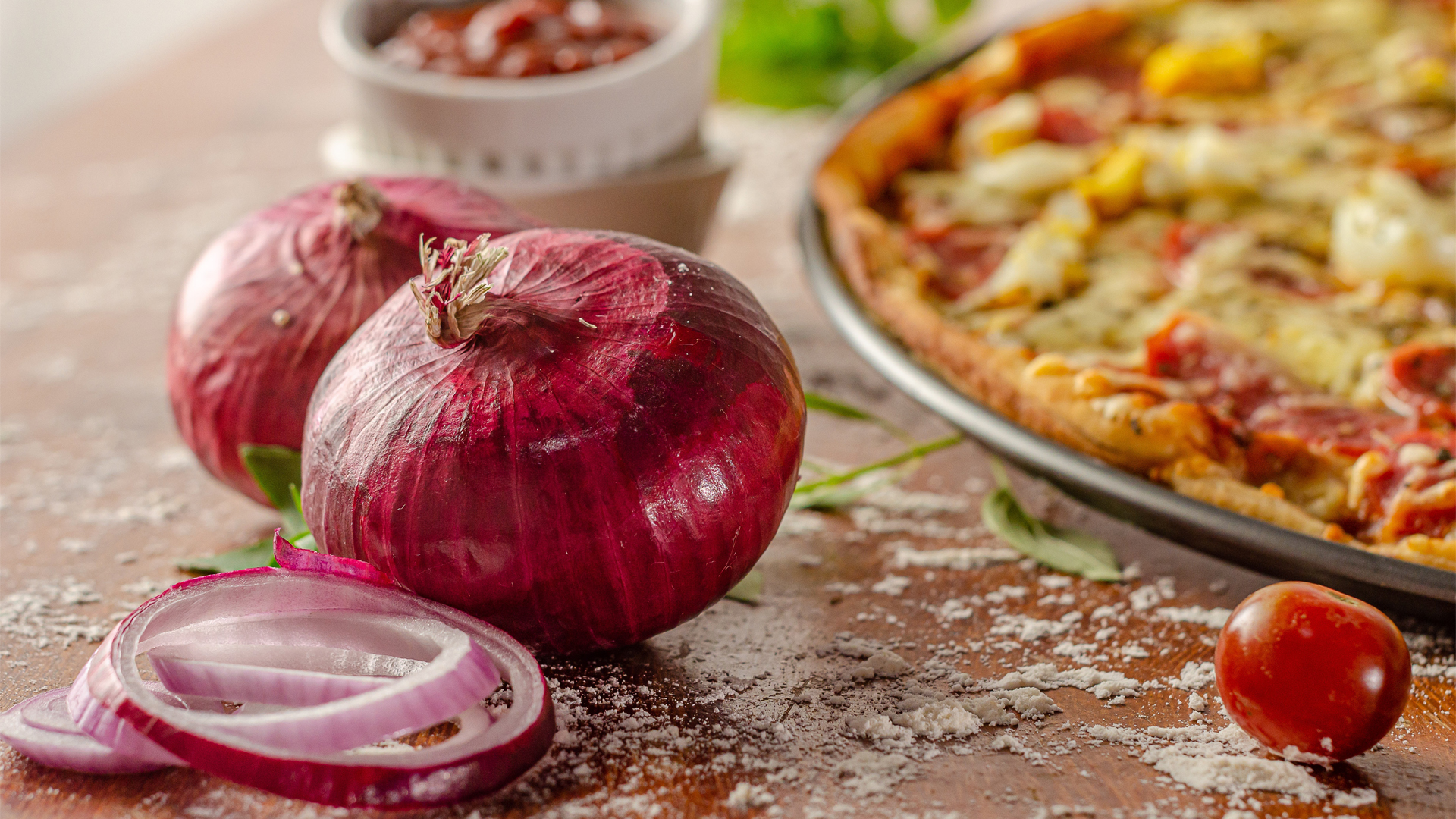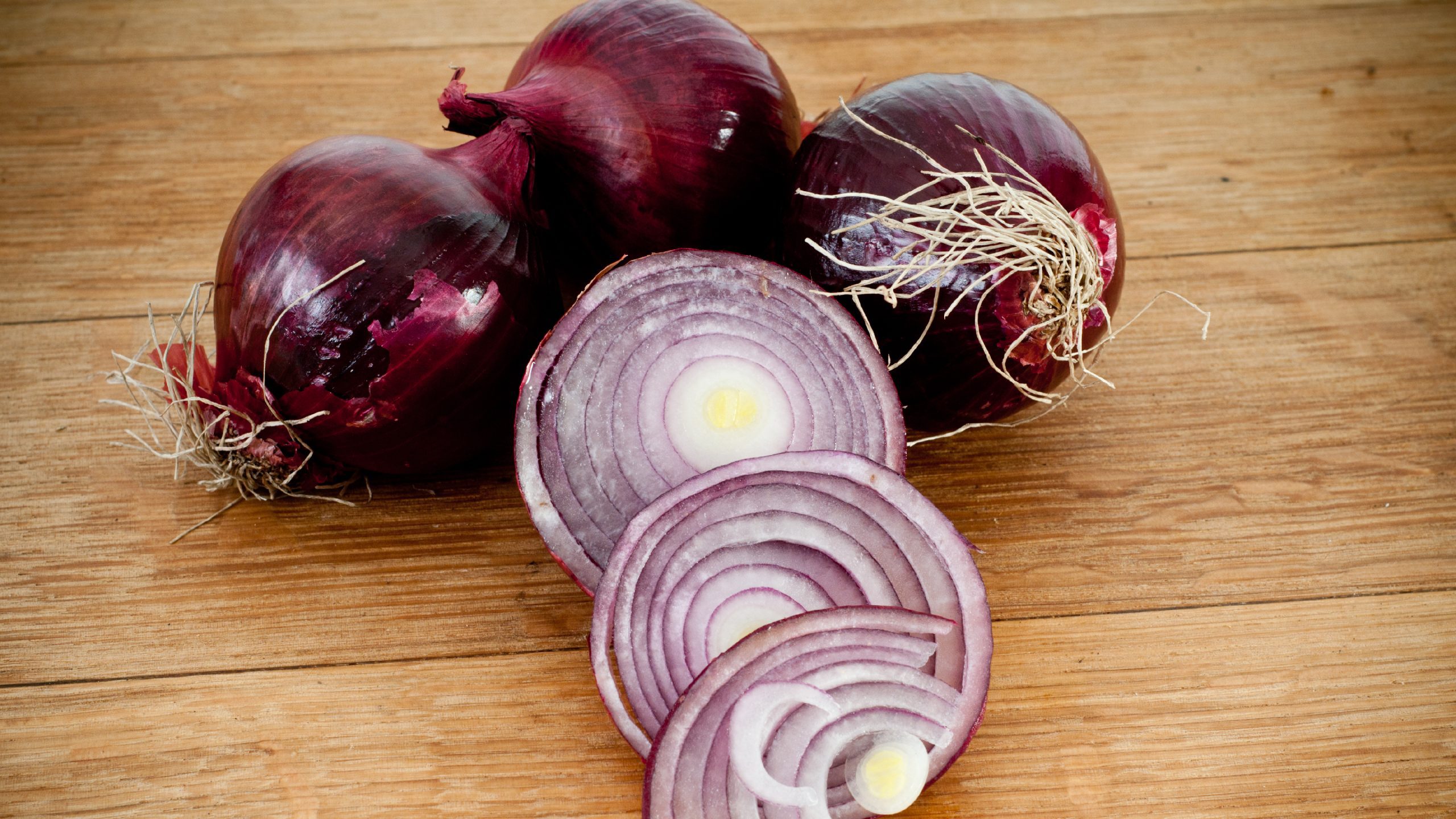You may have heard the Tropea onion be referred to as Italy’s “red gold” or “red queen,” and for good reason. This vibrant purple onion is so sweet, it can be eaten raw – and without tears. Hailing from Tropea, an ancient hilltop town overlooking the turquoise waters of the Tyrrhenian Sea in the southern Calabria region, the bit that makes up the “toe” of Italy’s boot, the onion is often served raw on bruschettas and salads, and can even be found in jams and gelatos.
The Tropea onion has been cultivated in Calabria for 4,000 years. It was likely brought from Central Asia to Calabria by Pheonician and Greek sailors where it thrived in the mild coastal climate, year-round sunny days, and fertile soils packed with sand from the Tyrrenhian beaches, which functions as a natural booster. Today, these onions grow on a 60-mile stretch from the town of Amantea to the Capo Vaticano peninsula. While the red onions grow all over the southern region, the ones cultivated near the coast are usually sweeter and more delicious.

This coastal Calabrian climate results in an onion that’s so sweet it can be plucked straight from the ground and eaten raw. They’re rich in antioxidants and vitamins and low in pyruvic acid, which means they don’t bring tears to our eyes when they’re cut. Their incredible sweetness lends itself well to a number of dishes. In fact, onions can be eaten like an apple. They’re served in pastas, sandwiches, salads, sliced over pizzas, and heaped onto bruschettas drizzled with olive oil. They’re also commonly served in a frittata, an omelet with potatoes, and can be made into a delicious jam combined with sweet peppers to be spread on crostini, pieces of grilled bread, or served with cold cuts and cheeses.
Aside from their culinary prowess, they’re also widely used in folk medicine as a natural remedy to various ailments. They’re thought to prevent heartburn, reduce inflammation and the risk of arteriosclerosis, protect the heart, and lower blood pressure. They’ve also been used to cure colds, sore throats, and coughs, as well as to treat wasp stings – rubbing a fresh cut side of onion onto the sting supposedly prevents the skin from swelling and itching.
Asia London Palomba
Asia London Palomba is a trilingual freelance journalist from Rome, Italy. In the past, her work on culture, travel, and history has been published in The Boston Globe, Atlas Obscura, The Christian Science Monitor, and Grub Street, New York Magazine's food section. In her free time, Asia enjoys traveling home to Italy to spend time with family and friends, drinking Hugo Spritzes, and making her nonna's homemade cavatelli.

